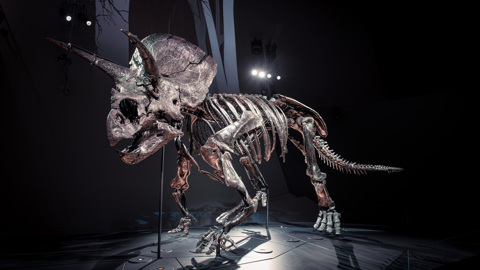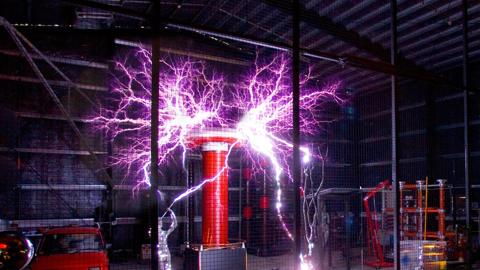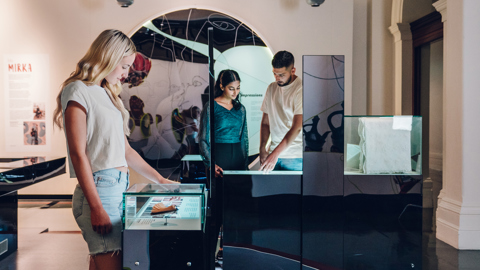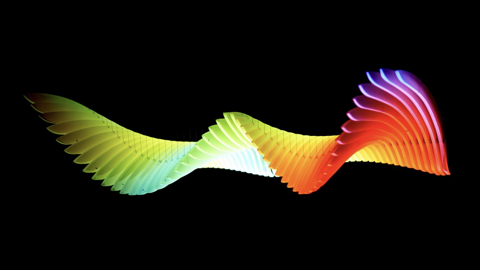Jac Ormes, Shock Factor (SHCK)
Transcript
In his project, Jac has designed a brand identity/guidelines and promotional material for ‘Shock Factor’: an organisation supporting homosexual connections and kinships (SHCK) and striving to break contemporary taboos of homosexual monogamy. The project also provides a dating app user flow diagram, animation video and app icon board.
Jac used digital methods for the branding and promotional material for it to be displayed in Australian capital cities. The logo utilises the first letters of the organisation’s aim (Supporting Homosexual Connections (and) Kinship), composed using a variety of geometric lightning bolts, isosceles triangles and a logotype set in Zuume Black. The lightning bolts (in white/negative) create the separations between the two downstrokes of the capital letter ‘H’ and the two upstrokes of the capital letter ‘K’. Variations to this primary logo include the spelling out of the acronym beside or beneath the logo, in a range of colourways including white on black, black on white, white on dark blue and white on mint. The branding guidelines demand that any additional text within the campaign should be in Neue Haas Grotesk Display Pro 75 Bold typeface.
The accompanying folio charts the journey through the design brief, mood boards, competitor analysis, design and concept development and refinement following feedback.
One of the promotional posters features the logo rendered in sky blue, split evenly over two lines. Almost obliterating the top half of the logo is the organisation’s aim in white text. The bottom half of the logo is half covered by a photograph of the head and torso of a young man in a dark hoodie, whose pale face is tinted blue as though from the reflection of the poster’s main colourway. He looks up at the text with a faint smile on his lips. There is a mock-up of this poster on display on a train station digital display board. Another poster features the same young man, again tinted blue, beneath a cutaway overlay of the logo in white. Vertical text in black running down the left edge of the poster reads ‘Supporting Homosexual Connections and Kinships’ and ‘Download now on IOS and Android’. A third poster features the same young man with his chin cupped in his right hand. White text overlaid beneath his face reads ‘Dating Done for Dudes’, then below that the logo and the fully spelt out words of the logo’s acronym. A fourth poster features the young man smiling down at his phone. A series of instant messaging speech bubbles relay a conversation: “Keen to catchup?; “I could book dinner for tmr night?”; “See u at 7 😊”. Billboards include a landscape version of the last poster; and a second which trisects a landscape panel into two outer images of the young man dancing sandwiched around the logo, its fully spelt meaning and the call to action to download the app.
The flow diagram for the app’s user- interface shows a series of phone screens that track a journey through the app. A welcome page features a version of the posters with a choice to register using a phone number or email address. A questionnaire leads to the Home page with a photo in a lightning bolt frame of a smiling man in a blue ski jacket and ski goggles standing amid snow. White on black letters detail his name (Noah Hayes), age (21), pronouns (he/him) and distance from the user (15.5km). Subsequent pages in the app include a user information page, where Noah’s bio tops a list of keywords ‘about me’ and ‘interest’ along with more photos of Noah. A message page features circular profile photos above a search bar, then below the same and more photos alongside a name and a blue dot to indicate if they are currently active on the app. A user-settings page provides links to account settings, notifications, location settings, blocked profiles, privacy policy, face ID protection, Cloud data backup, media quality, and terms and conditions, as well as options to log out or delete account. The app features three icons which run along the bottom of the screen: a settings icon (made from a more curvaceous version of the traditional cog shape), a home icon (again, a more softly edged icon of a house with an open door) and a message icon, which features a lightning bolt within a speech bubble.






